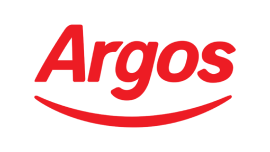

If you want to compete with Amazon, you had better come ready for a fight.
Argos Limited started as a high street catalog store in the early 1970’s. Today, as part of the Sainsbury Group, Argos operates nearly 900 physical stores across the UK, and has become the UK’s third-largest online retailer.
E-commerce has become increasingly important to Argos’ success, with over 1 billion visits to their online store in the last year alone. But margins are tight and competition stiff.
For Argos QA Service Manager David Brown, the hybrid of online plus brick and mortar channels means supporting a “big, weighty integrated system” that includes everything from finance systems running on mainframe servers to firmware on point-of-sale devices and high-volume websites.
As more and more business has shifted online over the last five years, Argos has gone through a process of transitioning from waterfall-driven development to an agile approach. Despite the increase in complexity of the technical systems they test, the quality team at Argos has simultaneously had to keep costs as low as possible to help Argos compete against online giants like Amazon.
In response, the technical testing and QA team at Argos needed to evolve their testing approach to support both the old, mainframe-based infrastructure (where a lot of testing is manual) as well as new micro service-based webapps (where changes are more frequent, release pipelines are built around CI/CD, and a lot of testing can be automated).
It also meant finding a more cost-effective, easier-to-use tool to manage their testing efforts.
Argos’ previous test management tool, Micro Focus ALM/Quality Center (formerly known as “HP ALM”), was “bulky, confusing, and more importantly, expensive,” according to David. As the organization worked through a company-wide digital transformation initiative over the last few years, David was charged with finding a tool that could save the team money while continuing to meet all of their test management requirements.
Like many IT teams, the QA and Dev teams at Argos use Atlassian Jira for project management, so compatibility between their testing tool and Jira was important.
The testing tool needed to be able to handle a wide variety of testing frameworks and use cases, from regression and functional testing to user acceptance and integration testing. It also needed to be able to handle Argos’ massive test case repository, which numbers in the tens of thousands across their various technical systems.
The tool also needed to be easy to use and easy to onboard with. Argos’ QA team is made up of a variety of functional roles, from embedded software engineers in test to automation engineers and business-facing manual testers, and whatever new test management tool they adopted had to support each of their users’ workflows and styles.
Most importantly, the tool needed to be cost-effective and well supported.
David Brown
Argos Limited

After doing some research, comparing various vendors and completing a few trials, it became clear that TestRail was the right choice to support Argos’ test management efforts moving into the 2020s.
As David explained: “TestRail allowed us to hit the ground running.”
The first and most notable difference between TestRail and Micro Focus ALM/Quality Center (formerly known as “HP ALM”) was the actual user interface. “ALM was very cluttered, while TestRail was clean and made it easy to get to where you needed to go—a real tester-friendly tool.”
TestRail’s Milestones feature gave David’s team an easy way to plan, execute, and track their testing efforts across multiple test runs all related to the same, cross-system release. Easy-to-read pie charts help David’s team get a pulse on the progress of testing at a glance, with more customized and extensive reporting available for more significant retrospective requests.
TestRail also gave each of the different teams spread across Argos’ systems the flexibility to implement the workflow and settings they needed to be successful across a wide variety of test types (from performance testing to automated testing to user acceptance testing). Some teams use the TestRail API trigger automated tests and post test results so they can track the status of all of their testing from a single source of truth.
Most importantly, by switching to TestRail, David was able to save his QA team more than $180,000 a year.
As David put it, the savings from TestRail “was a significant amount—you can do a bit with that. That’s 4-5 extra heads on the team.”
TestRail was a strategic investment for Argos’ QA team, providing a robust tool to ensure high-quality software releases across an incredibly complex system. But what was the ultimate reason TestRail was the right tool for the job? It did all this while giving David and his colleagues more budget flexibility and allowing them to be more agile in their response in the rapidly-changing landscape of their business.